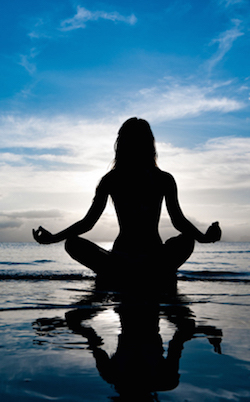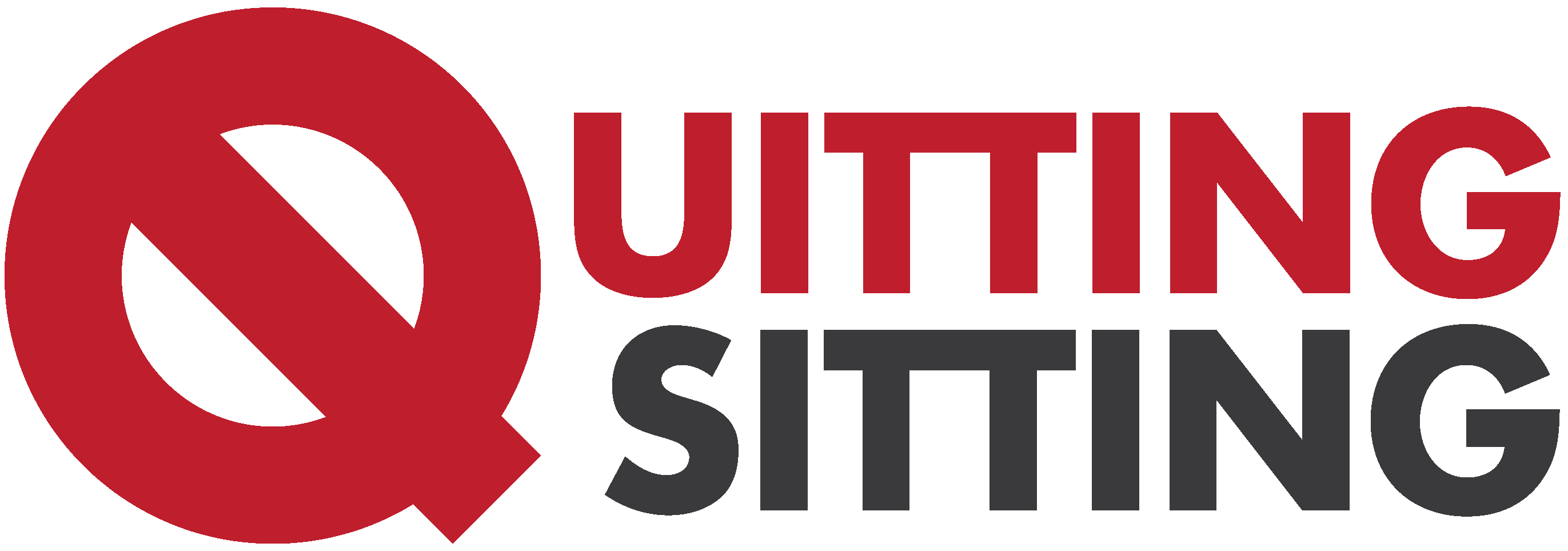 I’ve stated before my belief that quality movement and quality health both come easiest to those who develop a strong “feeling” sense.
I’ve stated before my belief that quality movement and quality health both come easiest to those who develop a strong “feeling” sense.
Since our bodies, minds, and emotions are constantly responding to the foods we eat, the company we keep, and the quality and volume of movement that we perform throughout the day, we should always take a moment to feel how we are changed after making any kind of choice.
By checking in regularly with this internal feedback, we can make better decisions about whether to stay a particular course, to revisit held assumptions, or to begin seeking help from a new source.
But we don’t always feel safe accepting these feelings as valid, and may even suspect that this internal guidance could somehow endanger us. As a result, we often construct “either/or” scenarios and convince ourselves to choose EITHER acknowledgment of these guiding feelings OR pursuit of more celebrated priorities. And while I believe it is rarely beyond us to BOTH acknowledge our inner truths AND pursue useful goals, I recognize the challenge of embracing such a perspective when we are plagued by notions of urgency and high stakes.
My Personal Journey to Owning My Pain
In my own life, I racked up years of terrible working habits while ignoring clear and consistent internal warning signs, overlooking occasional twinges that grew into routine aches which burst, finally, into chronic pain that I could no longer neglect.
Over many years and throughout key developmental stages of my youth, I would spend hours each day glued to various desk chairs, head craned and eyes tensed, shoulders raised and internally rotated, back curved and hips tucked under…a biomechanical trainwreck not unlike a fetus who had traded its womb for a desk. On any given day, I routinely ignored my own discomfort as much as I ignored others’ suggestions to “take a walk” or “rest my eyes”, for fear that I would lose my precious working momentum.
Today, I realize that what I then called “momentum” was, in fact, simple inertia. A compulsion to mindlessly do and never honestly review. To never ask the hard question of what all my “doing” was, in fact, doing for (or to) myself. To ignore the difficult feelings that might lead to uncomfortable decisions. To disown the fact that, beneath the ceaseless doing, I was hurting.
Hurting from emotional fear: that to slow down and reassess would be to admit failure.
Hurting from mental knowledge: because deep down, I knew that I was wrecking my body.
And hurting, literally, from physical pain: in my back, in my hips, in my shoulders, in my neck… upstream, downstream, an all-around anatomical checklist of nagging soreness and outright PAIN just beyond the observance of my forcibly-diverted attention.
I had grown skillfully numb to my own hurt. I had learned, with so many hours of consistent practice, to shut off my feeling sense as a way to maintain “momentum”. I was so invested in my work-centric definitions of “achievement” (and beneath that, “survival”), that I had grown oblivious to the legitimacy and significance of my feelings.
Because underneath all the doing, I was scared. Scared to fail in my work, yes, but even more scared to feel the pain that I knew was there, waiting for me, looming larger every day I ploughed past it, hoping I would never need to experience its full texture or duration, its weight or its dimensions within my body.
Today, after years of rehabilitating my work-induced chronic pain, I am blessed with a pain-free active lifestyle and the perspective that pain need not be normal or inevitable, not even for modern desk workers (which I still am, and plan to be). But to get to where I am now, I first had to face up to my pain, to say to myself:
“I hurt, and this feeling is real, and I will not stop feeling my pain as long as my pain is present. I will not lie about my pain, to myself or to others. I will not hide from my pain, or hide my pain from myself. My pain deserves my respect, because my body deserves my respect.”
In future posts, I will delve further into the science of pain and its causes, as well as some fascinatingly simple ways to treat certain kinds of chronic pain – even by yourself, at home.
I consider this essential information for anyone living in our modern, chair-filled world whose many “conveniences” are constantly stressing our joints, soft tissues, and fluid dynamics in novel ways that our adaptable, albeit evolutionarily-constrained biomechanics, are simply unequipped to manage in the long-term without conscious efforts to reclaim our original, ancestral movement patterns on a regular basis.
I believe that chronic pain, while common to our contemporary condition, remains perfectly preventable for those armed with mindfulness, education, and a healthy dose of creativity.
What I Know Now About Pain
For now, I leave you with the following observation.
The more we numb out, and the less we feel our own bodies, the closer we become like the proverbial frog in the boiling beaker: or in our case, the proverbial desk worker who throws out his back lifting groceries, or who pulls her hamstring while “just walking.”
Out of the blue? Or out of touch with months and years of quiet, persistent signals that something is beginning to go wrong?
Today – right now – own your pain. And it won’t end up owning you.

HOME PLAY (Your Homework)
The Body Scan
To better feel our bodies and any pain we might carry, we can start by focusing attention on the subtle sensations we experience throughout our day. The following “Body Scan” exercise can be performed in any position, anywhere, any time, with eyes opened or closed, in motion or in stillness. But to start, let’s first try it lying down with eyes closed and our bodies still.
Remember that nothing we feel today needs to be fixed or changed. Just feeling is enough. We are here to notice how we feel.
Setting Up
Lie down on your back, on a firm surface, in a quiet place. Close your eyes and let go of your breath, allowing your lungs to deflate with their own weight. Enjoy how it feels to deflate and soften. Your soft throat. Your chest softly empties. Your diaphragm relaxing downward into your loose belly. Your pelvis resting, softly and supported.
Let your lungs be free to reinflate, and notice how they fill up “just enough” before gently deflating once more. As though your insides are flexing, pulsing, rebounding…back and forth, on their own, as your whole body breathes. Enjoy these soft, smooth cycles. Rhythm is not important.
Contact
You are heavy now, resting, as your insides gently pulse. Your head, arms, and legs are comfortable and soft as they sink deeper into the ground. Your pelvis sinks further, and the ground holds you gently as you sink.
Questions
How do the skin and muscles in your forehead feel? Feel your scalp and forehead relax. Is there tension near your eyes? Let your jaw relax, and your tongue and teeth grow soft. Does your neck change too?
Which shoulder feels more supported by the ground? Which shoulder feels higher off the ground? Do your shoulders feel held up? Or do they fall from you toward the ground? Are they the same?
Where do your upper arms touch the ground? Do they grow deep into your torso? Which arm feels more connected to your body?
Let your hands rest gently with palms and fingers soft. How do your palms feel? How much do your fingers curl?
Imagine where your vertebrae are, one by one. Feel where they must be, inside of you. How far up your neck do they go? How far up into your head do they go?
What part of your pelvis touches the ground more, the left or the right? How broad does it feel? Where is it heaviest?
How far into your pelvis do your legs go? How high up your torso do they begin? Is it the same for both? Which foot feels farther away?
Are the backs of your knees touching the ground? Is your upper thigh pressing into the ground? Are the bottoms of your feet turned inward or facing away from you? How do your heels feel? Are both heels touching the ground at the same place?
Imagine a thin, straight line running up from your groin all the way through the top of your head. Feel the line inside your body, traveling up through your torso and through your head. How clearly can you feel the line? Only some parts at a time, or the whole line at once?
Now feel a felt marker trace a straight line up your body, starting at your pubic bone. It moves along your skin, over your sensitive belly button, and up your tummy and breastbone and up your throat, over your lips and nose and up between your eyes, up over your head and back down your spine. It travels up your groin and reconnects to where it started at your pubic bone, just beneath your belly button. Did the marker draw a straight line, or does the line curve to the left or right? Where were you most sensitive to its “touch”?
Discomfort
Did anything feel uncomfortable at any point? If so, rest your attention on that part of you. Can you outline or cross-section the painful spot? How deep is the spot? How broad is the spot? Are the borders of your outline fuzzy, or sharp?
How do you react emotionally to the discomfort? If I asked you to describe your feeling as Sad, Mad, Happy, Afraid, or Ashamed, which one feeling or combination would you choose?
I invite you now to feel that emotion, while continuing to rest. Can you feel the emotion, and rest, together? If you can, then continue to sink, to rest, and to feel the emotion.
When you are ready, please open your eyes, gently roll to one side, and sit up slowly… while paying attention to changes in your body and your emotions as you shift into your regular waking state. Make it a great one 🙂





nice